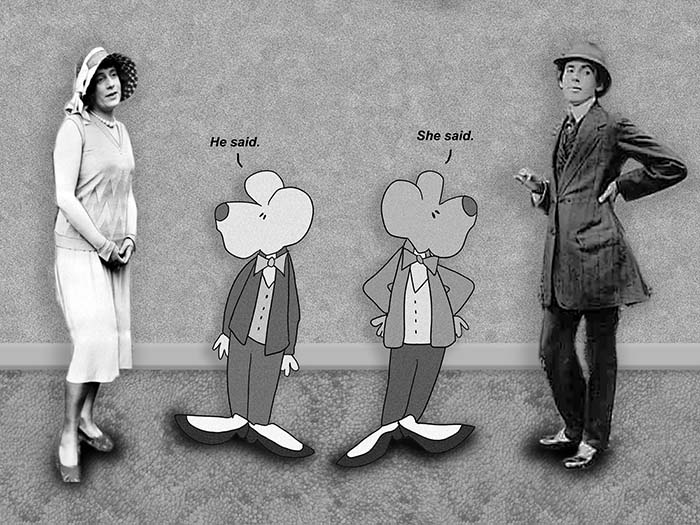It started long, long before Lili Elbe. Probably since we first started standing and walking on our own two feet, we humans. But Lili Elbe was the very first identifiable recipient of sex reassignment surgery. She was transgender.
I should note here, just for clarity’s sake, transgender people are people whose gender identity is different from the gender they were thought to be at birth. As it goes, when we are born, a doctor usually says that we’re male or female based on what our bodies look like. “But some people’s gender identity – their innate knowledge of who they are – is different from what was initially expected when they were born. Most of these people describe themselves as transgender.” (apa.org)
Her full name became Lili Ilse Elvenes. However, she was born unto this planet as Einar Magnus Andreas Wegener. As it happens, this is her birthday, this December 28, 1882.
When she still looked like a he, Wegener found high success as a Danish painter. She stopped painting after she transitioned, after sex reassignment surgery.
It is speculated that Elbe was intersex. Some reports indicate that she already had rudimentary ovaries in her abdomen and may have had Klinefelter syndrome. But, to clarify, for those who may not be familiar:
“Intersex is a general term used for a variety of situations in which a person is born with reproductive or sexual anatomy that doesn’t fit the boxes of “female” or “male.” Sometimes doctors do surgeries on intersex babies and children to make their bodies fit binary ideas of “male” or “female”. Doctors always assign intersex babies a legal sex (male or female, in most states), but, just like with non-intersex people, that doesn’t mean that’s the gender identity they’ll grow up to have. This brings up questions about whether or not it’s OK to do medical procedures on children’s bodies when it’s not needed for their health.” (isna.org)
Back to Lili Elbe and her wife, Gerda Gottlieb. The two of them met while they were students at the Royal Danish Academy of Fine Arts in Copenhagen. Elbe still looked like a man. They fell in good love, and they married in 1904 when Gottlieb was 19 and Elbe was 22.
They were artists and worked as illustrators. Lili specialized in landscape paintings. Gerda illustrated books and fashion magazines. Both were highly talented.
The two of them traveled through Italy and France. They finally settled in Paris in 1912. They felt this was where Lili could live more openly as a woman. Even still, she posed Gerda’s sister-in-law. But for the time, I am sure things were dicey.
Sometime earlier, Lili started dressing in women’s clothes. Every so often, Lili would fill in for Gottlieb’s model, the actress Anna Larssen, who on one occasion was late for a sitting. Lili liked putting on all the garb.
In 1930, Lili traveled to Germany for sex reassignment surgery. As you might imagine, these surgeries were highly experimental at the time. She underwent a series of four operations. This took place over a period of two years.
All of this hit the news. Her case was a sensation in Danish and German newspapers. Lili and Gerda had their marriage annulled in October 1930 in a Danish court. Lili began a relationship with French art dealer named Claude Lejeune. She wanted to marry him and have children.
In 1931, Lili had her fourth surgery. This, to transplant a uterus and construct a vaginal canal. Unfortunately, her immune system rejected the uterus. All of this led to a terrible infection and caused her death from cardiac arrest on September 13, 1931.
So there it is. A piece of history among the millions of other histories. Our world. Everyone has a story about our identities. We share this commonality in this human experience.
=========
“But how could you live and have no story to tell?”
― Fyodor Dostoevsky, White Nights
=========
“A story has its purpose and its path. It must be told correctly for it to be understood.”
― Marcus Sedgwick
=========
“We must seek together to address the good aspirations of people everywhere, for we are bound together through great commonality.”
― Bryant McGill, Voice of Reason
=========
Gender Identity. A long time ago.
